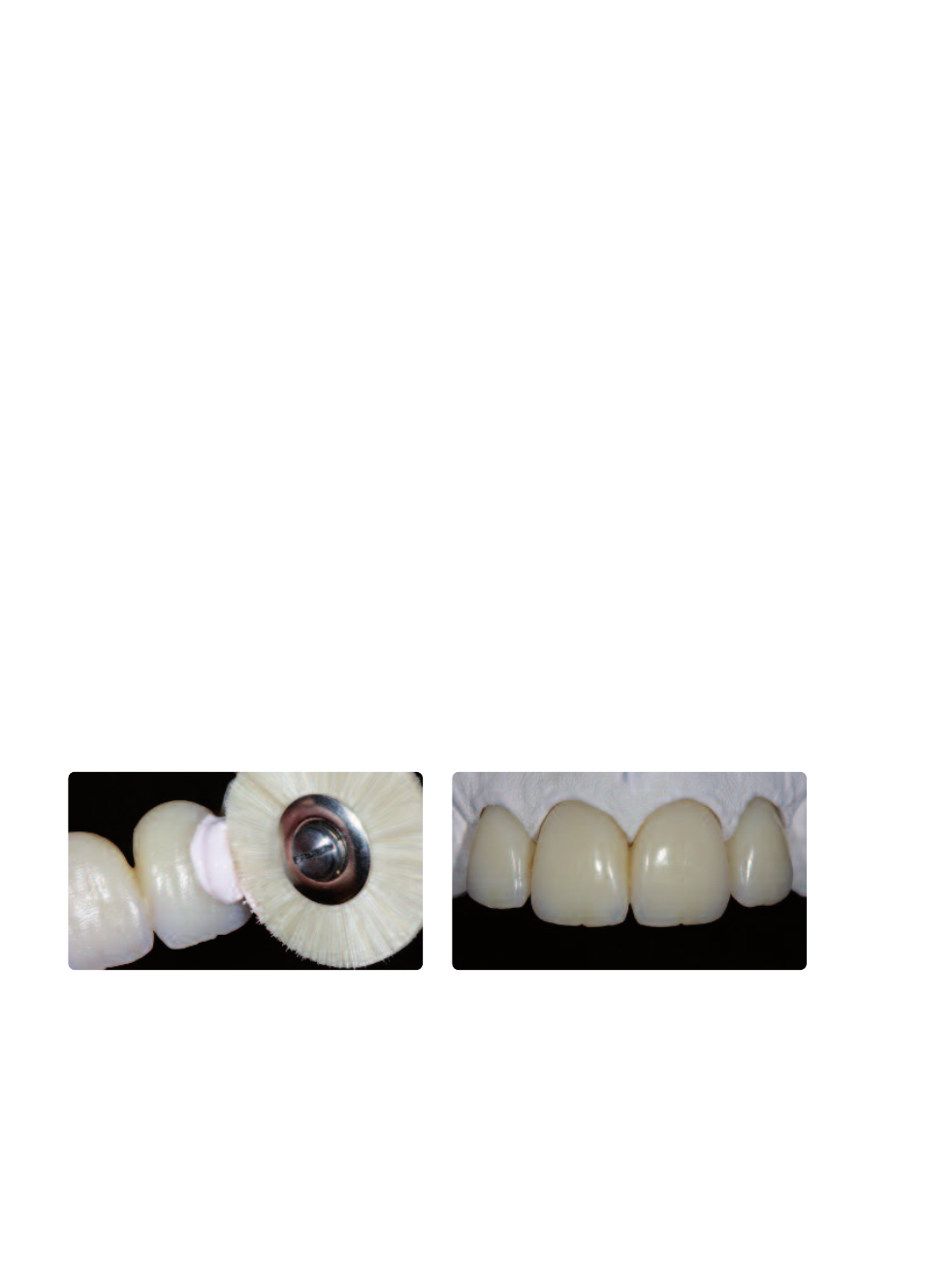Polishing – Ivoclar Vivadent Telio Lab User Manual
Page 40

Polishing
Careful polishing is the prerequisite for an optimum esthetic result. Polishing reduces plaque acummula-
tion and the resulting shade disturbances. Pay special attention to crown margins, interdental areas, occlu-
sal surfaces and the basal rest area of pontics. Manual polishing of the restoration is carried out with
rotary instruments and polishing paste.
In order to achieve a lifelike surface gloss, please observe the following procedure:
– Smooth out attachment points with suitable grinding instruments. Do not use rough-grained
diamonds, burs or similar instruments, since they are unsuitable to achieve a fine surface.
– Always pay attention to the contact points and margins during polishing!
– Use the corresponding speed and little pressure to avoid heat development.
Pre-polishing
– Smooth out the surface (convex areas) of the natural structures, as well as the marginal ridges with
rubber polishers and silicone polishing wheels so that they exhibit an extra lustre after high-gloss
polishing.
– Pre-polishing is done with the handpiece / goat hair brushes and fine pumice / Universal Polishing
Paste.
High-gloss polishing
– Polish the restoration to a high gloss using goat hair brushes, cotton or leather buffing wheels as well
as the Universal Polishing Paste.
– Use low speed and limited pressure. Adjust the pressure with the handpiece, not the polishing motor.
Modify the goat hair brush to become star-shaped in order to optimally polish the interdental areas
and occlusal surfaces. Given the smaller size brush, only the desired areas are polished.
– Depending on the type of high gloss desired, leather buffing wheels can be used to achieve a higher
lustre.
Polishing of the restoration with Universal Polishing Paste and goat
hair brushes
Completed Telio CAD restoration characterized with Telio Lab
on the working model
40
